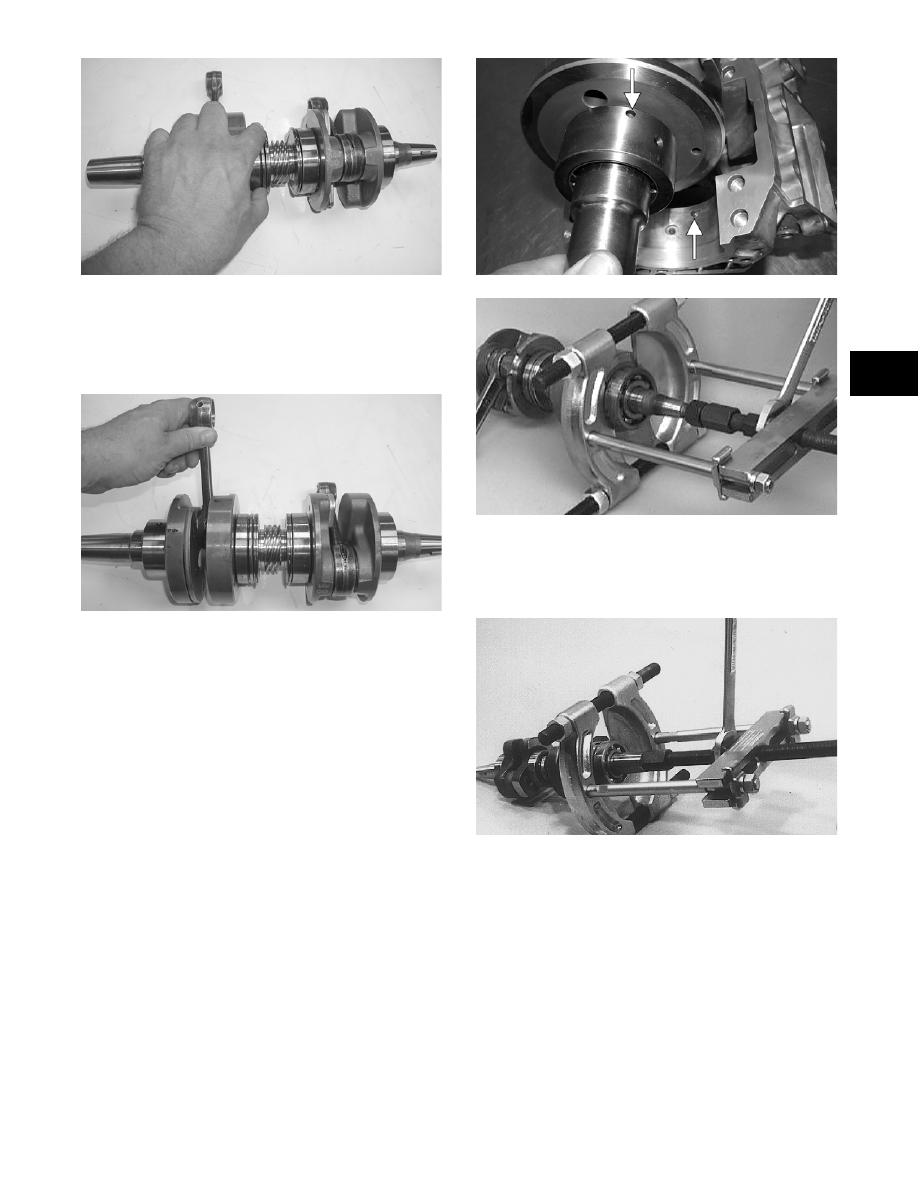Snowmobile Arctic Cat (2008 year). Manual - part 18

2-9
2
FC039
3. Inspect the connecting-rod bearings by rotating
them. The bearings must rotate freely and must not
bind or feel rough. If a connecting-rod bearing
must be replaced, the connecting rod and crank pin
must also be replaced.
FC040
4. Inspect the oil-injection pump drive gear for any
signs of worn or chipped teeth. If either condition
exists, replace the gear.
NOTE: Lubricate bearings thoroughly prior to
assembly.
REMOVING OUTER
CRANKSHAFT BEARINGS
1. Place the crankshaft in a suitable support; then
install Crankshaft Bearing Remover between the
journal and the MAG-end bearing.
2. Place the protective cap on the crankshaft end;
then remove the bearing from the end of the crank-
shaft. Account for any shim(s).
NOTE: For installing purposes, note the offset
position of the dowel pin hole.
CM045A
AN068D
3. Install the crankshaft bearing remover between the
journal and PTO-end bearing; then remove the
bearing from the end of the crankshaft. Account
for any shim(s).
AC100
4. Inspect the crankshaft bearing area for wear. If any
wear is noted on either end, replace the crankshaft
end.
INSTALLING OUTER
CRANKSHAFT BEARINGS
1. Wrap a thick towel around the crankshaft; then
secure the crankshaft vertically in a vise.
2. Heat the bearing either by placing the entire bear-
ing in a pan of oil on a hot plate or by squirting oil
into the bearing and using a propane torch to heat
the inner race of the bearing until a slight smoke is
noted coming from the bearing.